The specific driving forces of corruption vary from country to country, certain unique factors are regarded to be instrumental in deepening corruption practices in countries like Nepal. It is often argued that corruption thrives where states are too weak to control their own bureaucrats, to protect property and contract rights, and to provide institutions that underpin an effective rule of law. Other interrelated factors that are linked to the presence of corruption include extent of government involvement in the economy, the quality of institutions, and the extent of competition in the economy as well as poverty and inequality conditions. Rule of law and quality of a judicial system are also said to be equally important in controlling corruption in countries like Nepal (Malhotra C. Ram,1997).
There is also a view that society’s rooted behavior would also have important bearing on the degree of corruption practices in the society. Abundant natural endowment creating opportunities for rent seeking is also regarded to be contributing factor in the perpetuation of corruption. The degree of press freedom is also a crucial factor, because of its role in disseminating information and bringing transparency. The role of civil society in creating awareness against corruption or campaigning against corruption would have strong positive impact on a fight against corruption. In many instances, this enables to form a strong anticorruption coalition as well. Experience also shows that if state is captured by an oligarchic interest for securing preferential policies, it may also augment rent seeking practices. Conversely, fiscal decentralization is regarded to be an important vehicle of minimizing corruption, as it enables fostering of transparency and accountability due to closer contacts between local government and citizens. Similarly, balance of power in state’s constitutional organs, transparency in political institutions and existence of strong watch dog bodies are regarded to be crucial in controlling corruption (Khanal D. R. et.al., 2005).
This means that while reviewing the evolution of legal as well as institutional arrangements overtime, it is necessary to evaluate political, socio-economic and cultural contexts under which they were framed and implemented.
Brief History of evolution of anti-corruption legislation in Nepal
In 2002, CIAA Act was amended, authorizing full authority to investigate and prosecute corruption cases. Indeed, such an amendment was felt urgent since long in view of growing nexus among ruling elites, politicians, bureaucracy and other unethical stakeholders institutionalizing corruption, commissioning and leakages. This law for the first time granted CIAA the power of investigating the abuse of authority of the ministers also without any level’s prior permission. After reinstitution of multiparty democracy, political parties and the organizations affiliated to them started to mobilize funds from different sources and means without transparency. Such practice was continuing for long as political parties were left out of the orbit of audit. In order to contain such practice a bill requiring transparency in the activities of political parties was also passed in 2002. To expedite the process of corruption cases, special court was also established in 2002 (Nepal CIAA,2068).
To contain corruption practices in a wider and systematic way, Property Investigation Commission was constituted in 2002 with full authority to scrutinize the sources of income and accumulated property of those who held public position since the restoration of democracy in the country. The report submitted by this commission was handed over to the CIAA by the government for follow up and necessary action. In October 2002, king dissolved elected government and seized executive power. Further in February 2005 he formed a government under his own Chairmanship (Nepal CIAA,2068).
The royal government brought 21-point action program with priority in anti-corruption to create an illusion that his government would be clean one. He also formed a six-member Royal Commission for Corruption Control (RCCC). Against democratic norms and commonly accepted jurisprudence the commission was given powers of investigation, prosecution and adjudication. The commission was later declared unconstitutional by the Supreme Court and dissolved automatically by this verdict of the Supreme Court in early 2006.
Commission for the Investigation of Abuse of Authority Act, 2048 (1991)
Amendment to the CIAA Act, 1991 made in 2002, and enactment of new Prevention of Corruption Act hereafter referred to as POCA, 2002 and Special Court Act, 2002 have widened the power and authority of the CIAA. The amendments have incorporated the recommendations of various studies and reports including recommendations of Parliamentary Committees, the case law references, CIAA Annual Reports and Auditor General’s Reports. The past experiences were also taken into account in the course of amendment. A number of reforms in the Act of 1991 were made in the course of amendments through defining ‘person holding public post’, ‘public institution’ and ‘concerned authority’. Furthermore, it also simplified the judicial processes including procedural simplifications and co-ordination with other agencies of the government.
The empowerment of CIAA through the Amendment Act of 2002 has helped CIAA to move relatively at a faster pace in investigating corruption cases. In order to regulate its internal procedures, CIAA has introduced Investigation and Prosecution Guidelines 2002, and Enquiry and Investigation Guidelines 2003. It has also developed a CIAA Strategy 2002 for removing institutional and procedurals constraints. Moreover, it has also delegated its investigative and prosecutive power to the Chief District Officers by designating them as CIAA’s Investigation Officers at the local levels through its decision dated 15 August 2004.
It is stated in the preamble that “This act was promulgated so as to make provision relating to the functions, duties, and power and working procedures of the Commission for the Investigation of Abuse of Authority” (CIAA Act 1991). This act defines corruption under sec 2(h) as an offence punishable under the prevailing laws relating to the prevention of corruption.
CIAA act has defined improper conduct under sec 3 as; any of the following acts taken willfully or negligently by a person holding a public post shall be regarded as an improper Conduct:
(a) To refuse to do anything within the jurisdiction to do anything beyond the jurisdiction.
(b) To comply with the mandatory procedures while taking a decision or issuing an order.
(c) To exercise powers vested in him/her for any objective or purpose in contravention of the appropriate law, decision or order.
(d) To exercise discretionary powers in a mala fide or arbitrary manner.
(e) To create unauthorized obstruction in the work of any other office, authority or employee, or compelled them to perform any unauthorized action by exerting pressure on such office, authority or employee.
(f) To fail to do anything which one should have done, or send to another office or authority, evading responsibility, or
(g) To fail to discharge any duty pertaining to the post; which is required to discharge according to the nature of the post.
(h) To cause to work in one’s own interest to a person subordinate or person under the influence through undue pressure or lure.
(i) To abuse the immunity, facilities or privileges acquired in the capacity of a post.
Under sec 12 of the same act it has incorporated provisions to recommend for departmental actions if any person holding a public post does not submit a clarification within the time as prescribed or in case, in the opinion of the Commission, the clarification so submitted is not deemed satisfactory, the Commission may write to the appropriate authority to caution or to take departmental action against him/her upon stating the reasons and grounds based on the degree of offence.
The CIAA investigates mostly disproportionate property, fake educational certificates, illegal vehicle registration, irregularity on construction works, irregularity on procurement, bank fraud, revenue misappropriation, bribery and land related cases. Similarly, departmental actions, suggestions, admonitions, recovery of payment, censor, caution and suspension constitute larger share of actions which are intended to improve the governance system. Unlike in the 1991’s Act, ministers and parliamentarians are included within the purview of the CIAA. After this new Act, CIAA has the total power and authority to investigate and prosecute them without any prior approval of any other authority. It has also specified the corruption prone activities in the development related works, which, in turn, has facilitated the CIAA to look into the misuse of funds.
Even the malafied intentions inherent in the course of project design to the implementation can come to the scrutiny and investigation of the CIAA. The Act has also made a provision in which revenue sector corruption has been newly defined for ensuring that the CIAA could be in a position to investigate effectively and efficiently. This was particularly necessitated in view of judicial apathy toward revenue sector corruption.
The Prevention of Corruption Act (POCA), 2002 A.D
POCA, 2002 is the major anti-corruption substantive legislation now in force, which is commenced by repealing the previous POCA, 1961. This Act of 2002 is applicable against all Nepalese citizens, public servants and foreigners who commit any act of corruption. It has also extra-territorial application.
Its objective has been to adopt timely legal measures relating to prevention of corruption with a view to maintaining peace, convenience, fiscal discipline, morality and good conduct among the public. It has defined the act of corruption very broadly, and accordingly its net has been extended to all governmental, semi-governmental, government – controlled and sponsored public institutions including educational and academic institutions.
This Act not only enumerated a list of 20 offences to be termed as corruption and imposed punishments against them, but also dissolved the Special Police Department which was then responsible for prosecuting corruption cases. It has been replaced by National Vigilance Centre (NVC). The main purpose of creating NVC is to control the incidents of corruption as well as to conduct technical audit of development projects in response to the contemporary approach against corruption. Now control, deterrent, correction and prevention are the main ingredients of anti-corruption measures.
Preamble of this act states that “This act was promulgated so as to prevent corruption with a view to maintain peace, convenience, financial discipline, morality and good conduct among general public” (POCA,2002). This act extends its scope throughout Nepal and includes every Nepalese citizen, public servants residing anywhere outside the Kingdom of Nepal and to the non- Nepalese citizens residing in foreign countries having committed any act that may be deemed to be corruption under this Act (Art 3, POCA 2002).
According to this Act whoever being, or expecting to become, a public servant accepts or agrees to accept graft for himself/herself or for any other person in consideration of his/her performing or having performed or of forbearing to perform or having forborne to perform any act pertaining to his office or the related act or in consideration of favoring or disfavoring or causing or not causing a loss or of having favored or disfavored or having caused or not caused a loss to any person while carrying out his official functions, shall be liable to a punishment of imprisonment and of a fine as per the amount involved depending on the degree of the offense. In case the graft has already been accepted, it shall be confiscated (Art 3, POCA 2002).
The new Act widened the definition of offences in which a new set of suspected corruption related activities have been additionally incorporated. Similarly, new adjustments have been made in a way that could link the degree of criminality with the gravity of punishment. In the new provision, some specific procedural reforms are incorporated. The new Act provides the power and authority of freezing of passports, bank accounts and other immovable properties of the suspect to the CIAA.
False statements by the experts, illegal pressure by any one; false audit or investigation reports, false statement of property also come within the corruption net of the CIAA. The minimum and maximum penalties imposed against the perpetrator ranges from the minimum three months to the maximum ten years’ imprisonment. In the bribery cases, CIAA also can fine from Rs 2500 to Rs 10 million depending upon the nature and gravity of the cases. The amount of bribe also can be confiscated by the judicial authority.
Policy to combat corruption in Nepal
One of the preconditions for managing a successful anti-corruption agency (ACA) is to have a coherent and holistic strategy that focuses on prevention, detection, and investigation of corruption and the education and awareness raising programs against it (UNDP, 2005). Having a strategy may not guarantee ACA success, but not having one makes it vulnerable to failures akin to the saying: failing to plan is planning to fail.
The Commission for the Investigation of Abuse of Authority (CIAA) has initiated various institutional strategies as a roadmap for the Commission to initiate its activities for preventing and prosecuting corruption. This is also a driving tool to accomplish the task of curbing corruption so that it will contribute for good governance.
Commission for the Investigation of Abuse of Authority (CIAA) drafted its first strategic plan in 2002 which was designed as a five-year plan (2002-2006). In 2006, a second strategic plan was drafted as a three-year plan (2006-2008). Since then the CIAA has been working without any strategic plans whatsoever. Meanwhile, Nepal’s transitional situation has also created a demand for re-orientation of the CIAA to fight corruption. Thus the institutional strategy (2014-2019) for the CIAA was made with a long term vision of six years.
- Three years plan 2067-069
The three years’ plan was initiated with a view create corruption free society so as to establish rule of law and thereby strengthen the governance system of the state and promoting good governance (Annual Report, CIAA 2067/68).
Main object of the policy:
- To decrease corruption and misuse of authority by public officials.
- To initiate programs and plans to aware people to fight against corruption.
- To strengthen the institution itself so as to expertise in combating corruption
- To promote good governance
The policy incorporates the following plans:
- To make the act of collecting complaints and information in relation to abuse of authority and corruption more reliable.
- To investigate corruption and abuse of authority based and fact and conduct a speedy investigation.
- To make the investigation efficient and effective.
- To combat corruption from grass root level with the help of various nongovernmental organizations.
- To establish the corruption prone areas as the island of integrity
- Strategic plan 2014-2019
Six broad institutional strategies are proposed under this strategic plan for the CIAA. Three of them are core strategies. These core strategies follow three basic functions of anti-corruption agencies, namely, corruption prevention, awareness generation, and punitive actions (3Ps) (Strategic plan 2014-2019, CIAA).
Three core strategies is supported by three additional strategies. These include capacity development, coordinating of anti-corruption agencies, and building international linkages and collaboration. The strategy plan matrix outlines further details on sub-strategies, issues and challenges, objectives of the strategies, activities to be pursued within each strategy/sub-strategy, indicators to measure the success of the strategy implementation, time dimension of the strategy and the agency within the CIAA responsible to implement the strategy.
Core Strategies: 3Ps
The CIAA aims to pursue three core strategies, namely, punitive, preventive, and promotional (3Ps) activities. As entrusted by the constitution, anti-corruption law enforcement will be the core part of the CIAA activity. Prevention of corruption and promotional activities will complement and supplement anti-corruption law enforcement function.
Supporting Strategies:
- Three supporting strategies are recommended. These strategies include:
- Capacity development of the CIAA,
- Coordination and collaboration with anti-corruption agencies, oversight agencies, and CSOs,
- Building International Linkages
Figure No. 1 Core Strategies: 3Ps

(Strategic plan 2014-2019, CIAA)
International instruments
United Nations Convention against Corruption
On 1 October 2003 after almost two years of negotiations, member states of the United Nations finalized the text of a new international treaty, the United Nations Convention against corruption. Nepal signed the convention on 10 Dec 2003 ratified this convention on 31 Mar 2011.The legislative ratification of the United Nations Convention against Corruption represents a milestone in the evolution of Nepal’s struggle against public and private sector corruption. Supporting a powerful parallel economy, corruption is widely recognized as a key threat to political and socio-economic stability, development, security, and the rule of law. With the ratification of UNCAC, Nepal has a unique opportunity to bolster its national efforts with greater international support, and align its strategies with successful global efforts that recognize the importance of both preventive and punitive measures.
This convention itself represents a major step forward in the global fight against corruption and in particular shows the efforts of UN member states to develop a common approach to both domestic efforts and international cooperation (UNODC, 2003). The treaty can be seen as the product of a series of both procedural and substantive developments.
From a substantive standpoint, the new convention can be seen as the most recent of a long series of developments in which experts have recognized the far-reaching impact of corruption and the need to develop effective measures against it at both the domestic and international levels. It is now widely accepted that measures to address corruption go beyond criminal justice systems and are essential to establishing and maintaining the most fundamental good governance structures, including domestic and regional security, the rule of law and social and economic structures which are effective and responsive in dealing with problems, and which use available resources as efficiency and with as little waste as possible (UNODC, 2003).
The Convention introduces a comprehensive set of standards, measures and rules that all countries can apply in order to strengthen their legal and regulatory regimes to fight corruption. It calls for preventive measures and the criminalization of the most prevalent forms of corruption in both public and private sectors. And it makes a major breakthrough by requiring Member States to return assets obtained through corruption to the country from which they were stolen. These provisions the first of their kind introduce a new fundamental principle, as well as a framework for stronger cooperation between States to prevent and detect corruption and to return the proceeds (UNCAC).
Going beyond the scope of the convention against transnational organized crime, a series of specific anti-corruption measures have been added to promote transparency and high standard, particularly in the public service and applying both social and situational approaches to preventing corruption. A further significant development was the inclusion of a specific chapter of the treaty dealing with the recovery of assets, a major concern for countries which are pursuing the assets of former leaders and senior officials accused or found to have engaged in the corruption.
The purposes of this Convention are (Art 1, UNCAC):
- To promote and strengthen measures to prevent and combat corruption more efficiently and effectively;
- To promote, facilitate and support international cooperation and technical assistance in the prevention of and fight against corruption, including in asset recovery;
- To promote integrity, accountability and proper management of public affairs and public property.
For the implementation of these purpose the convention has incorporated the necessity of Preventive anti-corruption policies and practices which states that each State Party shall, in accordance with the fundamental principles of its legal system, develop and implement or maintain effective, coordinated anti-corruption policies that promote the participation of society and reflect the principles of the rule of law, proper management of public affairs and public property, integrity, transparency and accountability (Art 5, UNCAC).
United Nations Convention against Transnational Crime
The United Nations Convention against Transnational Organized Crime was adopted by the General Assembly on 15 November 2000 and open for signature from 12 to 15 December 2000 in Palermo (ltaly). In particular, the Convention foresees the criminalization of the corruption of public officials, the adoption of such measures as many be necessary to establish as a criminal offense the participation as an accomplice on such an offence, the liability (criminal, civil or administrative) of legal persons corruption public official, the provision of measures to prevent detect and punish the corruption of public official, the promotion of the concept of “integrity” of public officials as well as the provision of adequate independence to competent authorities in the prevention detection and punishment of the corruption of public official . The Convention strengthens its provisions by stating that the offence of corruption shall be established, inter alia, independently of the transnational nature or the involvement of an organized criminal group.
In particular, each State party shall adopt such legislative and other measures as may be necessary to establish as criminal offences when committed intentionally (Art 8(1a), UNCAC):
- the promise, offering or giving to a public official, directly or indirectly of an undue advantage for the official himself or another person or entity, in order that the official act or refrain from acting in the exercise of his or her official duties and
- The solicitation or acceptances by a public official, directly or indirectly, of an undue advantage for the official himself or herself or another person or entity, on order that the official act or refrain from acting in the exercise of his or her official duties.
In addition, each State Party shall consider criminalizing civil servant as well as the criminalization of other forms of corruption (Art 8(1) b).The UN Convention introduces and promotes the concept of “integrity” of public officials and foresees that each State Party shall take measures to ensure effective action by its authorities in the prevention, detection and punishment of corruption of public officials including providing such authorities with adequate independence to deter the exertion of inappropriate influence on their action(Art 8(1)b).
In connection with confiscation and seizure, the UN Convention foresees that States Parties shall adapt to the greatest extent possible within their domestic legal systems such measures as may be necessary to enable confiscation of;
- proceeds of crime derived from offences covered by this Convention or property the value of which corresponds to that of such proceeds and
- Property equipment or other instrumentalities used on or destined for use in offences covered by the Convention. For this purpose, each State Party shall empower its courts or other competent authorities to order that bank financial or commercial records be made available or be seized. Sates Parties shall not decline to act on the ground of bank secrecy.
The provision of the UN Convention dealing with extradition and mutual legal assistance are similar to traditional provisions already in place on many regional or bilateral agreements. The major significance of these provisions is that a large number of countries are expected to ratify the Convention making legal assistance and extradition available much more widely than is presently the case. These provisions are intended to set minimum standards only. Countries can go further in bilateral or regional arrangements, and are in fact encouraged to do so (Andvig, J. et al.2000).
Under article 16, extradition from another State Party may be sought for four specific offences established by the Convention independently of the involvement of an organized criminal group given the offence itself is punishable by the domestic laws of both States. Where extradition is refused solely on the ground that the concerned person is one of the requested State party’s nationals the requested State Party shall at the request of the State Party seeking extradition be obliged to submit the case without undue delay to its competent authorities for the purposes of prosecution (Art 16(10)). Also State Parties may not refuse a request for extradition on the sole ground that the offence is also considered to involve fiscal matters (Art 16(15)).
On the basis of article 18 the widest measure of mutual legal assistance can be requested from another State Party for any investigation, prosecution or judicial proceeding in relation to offences covered by the Convention. The provisions of this article can be used to obtain statements or other evidence, conduct searches or seizures, serve judicial documents examine objects or sites obtain original documents or certified copies, identify or trace proceeds of crime or other property, obtain bank corporate or other records facilitate the appearance of persons in the requesting state party, or any other form of assistance permitted by the laws of the states involved.
Since the range of forms of assistance available is generally consistent with many existing legal assistance agreements, the major significance of the Convention provisions will be that these extend mutual legal assistance to a much greater number of countries than is presently the case. According to Art 18(8), states parties to the UN convention shall not decline to render mutual legal assistance on the ground of bank secrecy. In addition, the UN Convention also provides the general bases for conducting joint investigation (Art 19), co-operation in special investigative procedures, such as electronic surveillance and general law-enforcement co-operation. The development of domestic training programs and the provision of technical assistance to other States in training matters are also encouraged (Art 29).
CONCLUSION
From the standpoint of stringent rules and institutional authority to deal with corruption, the CIAA Act 2002 has been a step toward positive direction. Many weaknesses or lapses inherent in the CIAA Act 1991 have been corrected in the amended Act.
Immediately after the enforcement of the CIAA Act 2002, many of the ex-ministers and officials involved in the revenue administration and development work alleged to be the corruption prone areas were investigated and prosecuted. Continued anti-corruption drive by the media, civil society and public at large played a catalyst role in this. As an offshoot of this, a high level Property Investigation Commission was formed to investigate the property of those who had hold public offices since the restoration of democracy in 1990. This also helped CIAA to book those suspect against whom the Commission had suspicion of disproportionate property, beyond their legal income. However, due to its increased work load beyond its capacity particularly in the absence of adequate manpower and resources on the one hand and its confinement to the centre on the other, it has not been able to widen its anti-corruption drive in consistent with expectations. Apathy and work load of the chief district officers and also some non-supportive attitude of the high level political and bureaucratic officials who are in corruption prone areas have also affected its performance and credibility.
The exclusion of Army from CIAA’s corruption net has limited the role of CIAA to a greater extent. This has given the impression that state is less serious to enhance anti-corruption drive in the entire public offices. Inability to bring courts within the purview of CIAA has further added suspicion on the fresh initiatives in controlling corruption.
There is no act on private sector corruption and hence CIAA has no authority to investigate corruption in the private sector. This has also constrained CIAA to widen its area of investigation. Financial irregularities also do not come within the preview of CIAA. Above all, inability to bring suspect of the corruption prone sectors in the CIAA net is a major stoning block toward enhancing the effectiveness of corruption control.
REFRENCES
Andvig, J. et al. (2000, December). Research on Corruption: A Policy Oriented Survey. Final Report. Norway: Chr. Michelsen Institute & Norwegian Institute of International Affairs. Retrieved from http://www.icgg.org/downloads/contribution07_andvig.pdf assessed on 8th August 9, 2015
CIAA (2002) CIAA’s procedure, resource book for investigation, Kathmandu: Commission for the Investigation of Abuse of Authority pg 25-30
CIAA (2010) Souvenir, Kathmandu: Commission for Investigation of Abuse of Authority pg 24-28
CIAA (2013) CIAA Bulletin, Kathmandu: Commission for the Investigation of Abuse of Authoritypg 2-7.
Commission for the Investigation of Abuse of Authority, Institutional Strategy of the Commission for the Investigation for the Investigation of Abuse of Authority (2014-2019), Kathmandu, December, 2013, pg 10
Dahal, Dev R. (1999): Comment on the Paper titled Possibilities of Reducing Corruption in Nepal, DFID, Nepal pg 44-49
DFID, DFID’s Anti-Corruption Strategy for Nepal January 2013, Department for International Development pg 32
Khanal Dr. Dilli Raj, Institution Building for Controlling Corruption: A Case Study on the Effectiveness of Commission for the Investigation of Abuse of Authority (CIAA) and National Vigilance Center (NVC) in Nepal Institute for Policy Research and Development (IPRAD) 2007pg 12-33
Malhotra, R. (1997) Governance in Nepal, Journal of Development Administration (Annual), Kathmandu Publication pg 7
National Studies and Research Centre, Review of National Anti-Corruption Strategy and Program of Government of Nepal. Kathmandu:(2011, 26 December), Transparency International Nepal pg 13-18
UN office on drugs and crime, Anti-corruption toolkit, 2005pg 1-20
UN office on drugs and crime, The compendium of international legal instruments on corruption, November 2003.pg17-19
UN office on drugs and crime, UN Convention against corruption, 2004
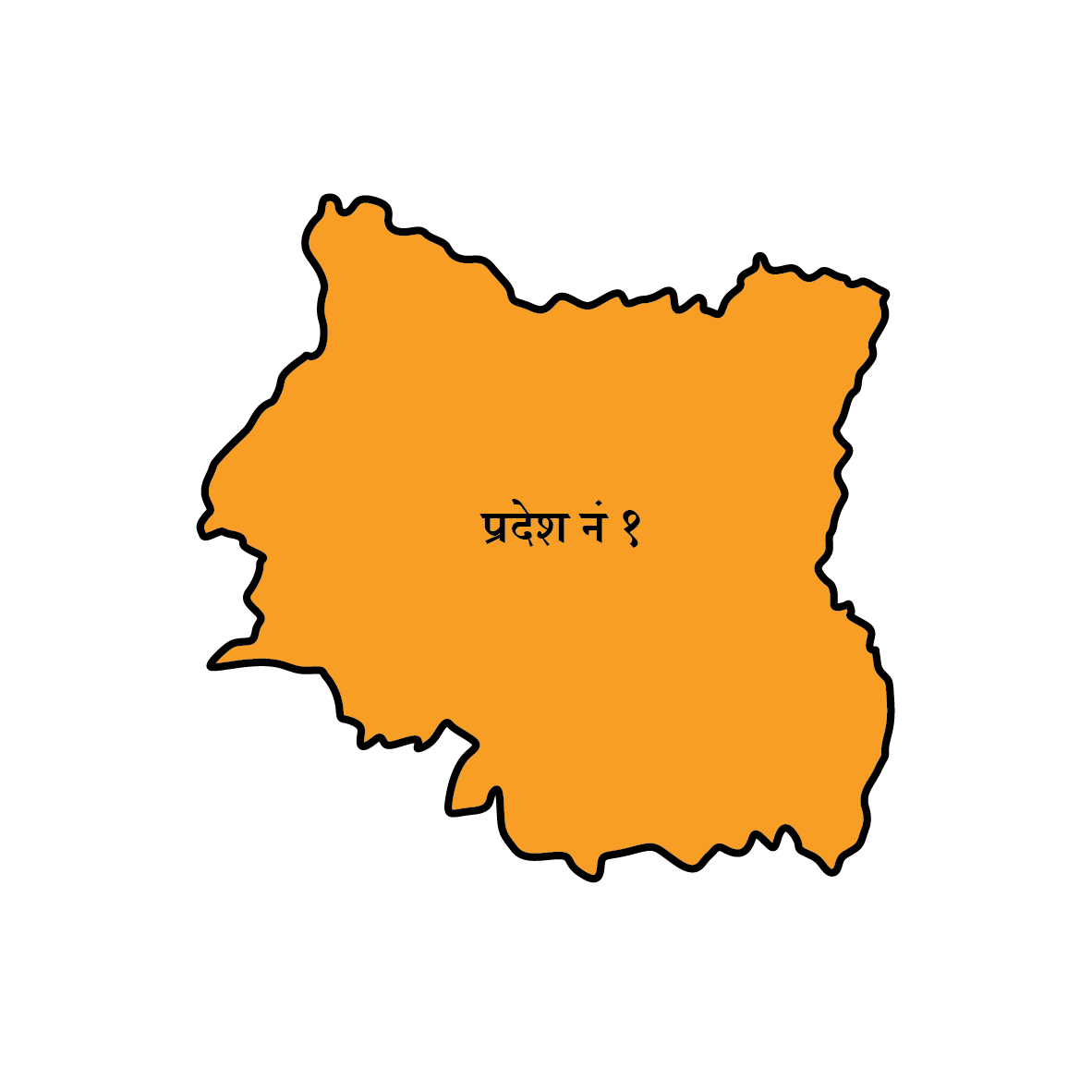 कोशी प्रदेश
कोशी प्रदेश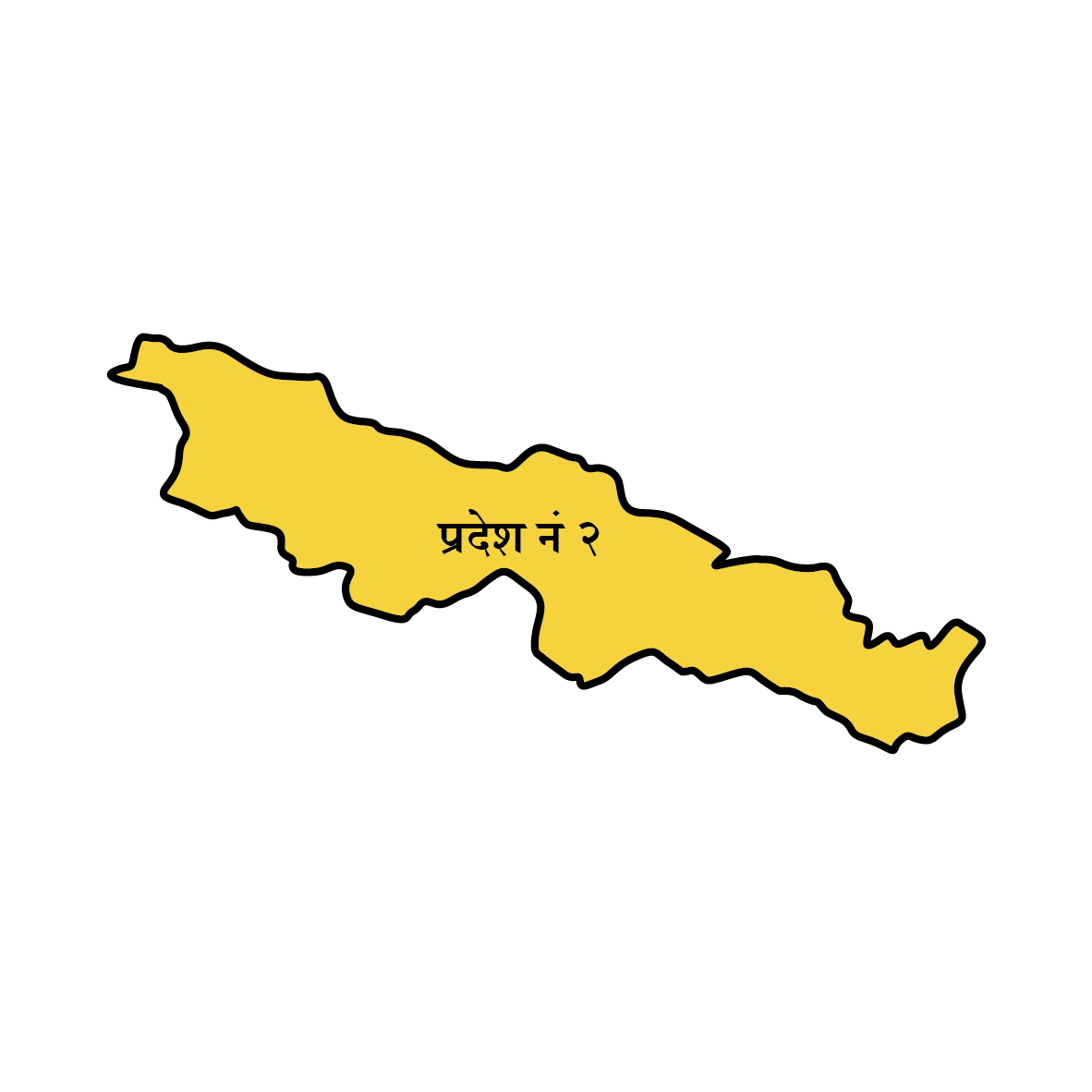 मधेश प्रदेश
मधेश प्रदेश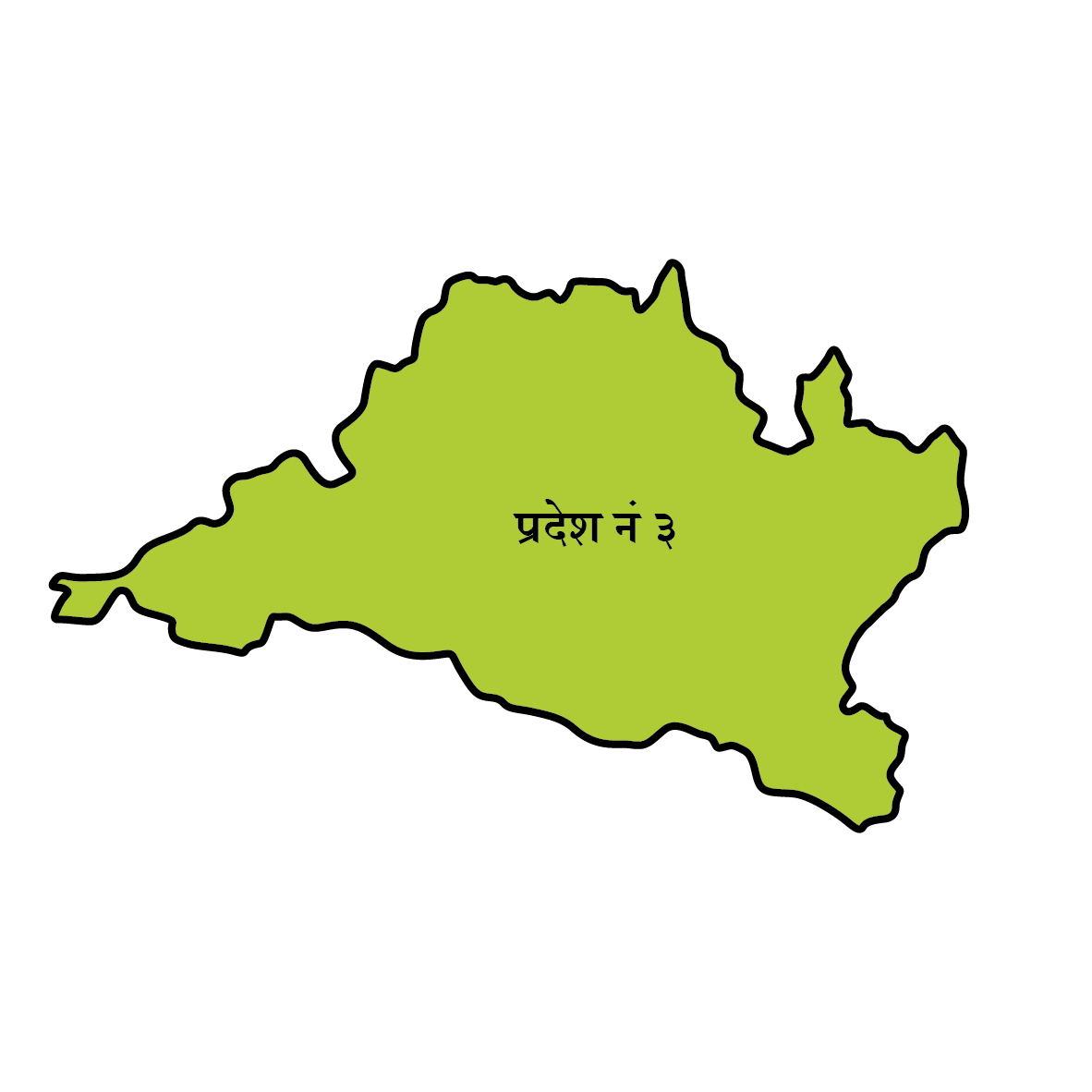 बागमती
बागमती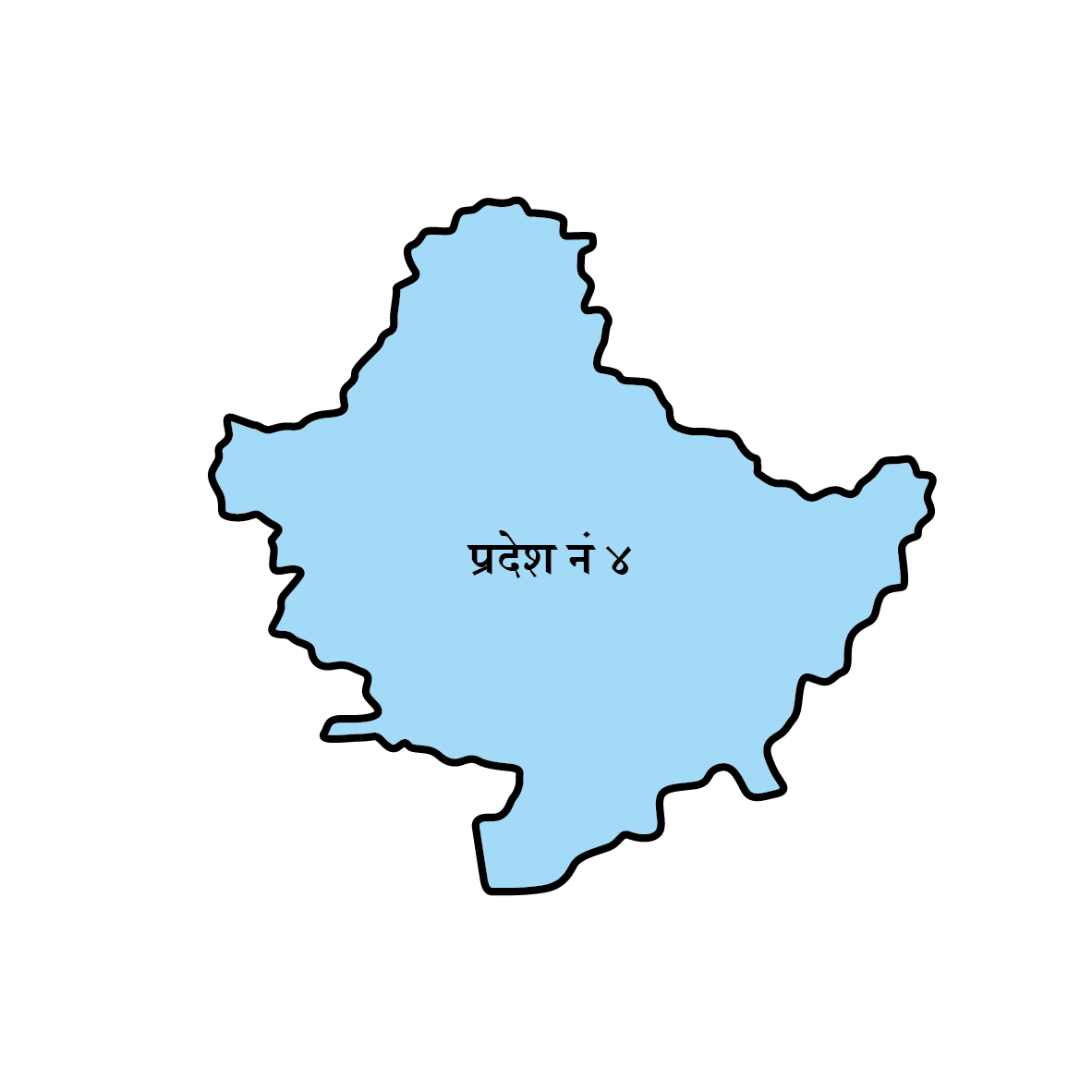 गण्डकी
गण्डकी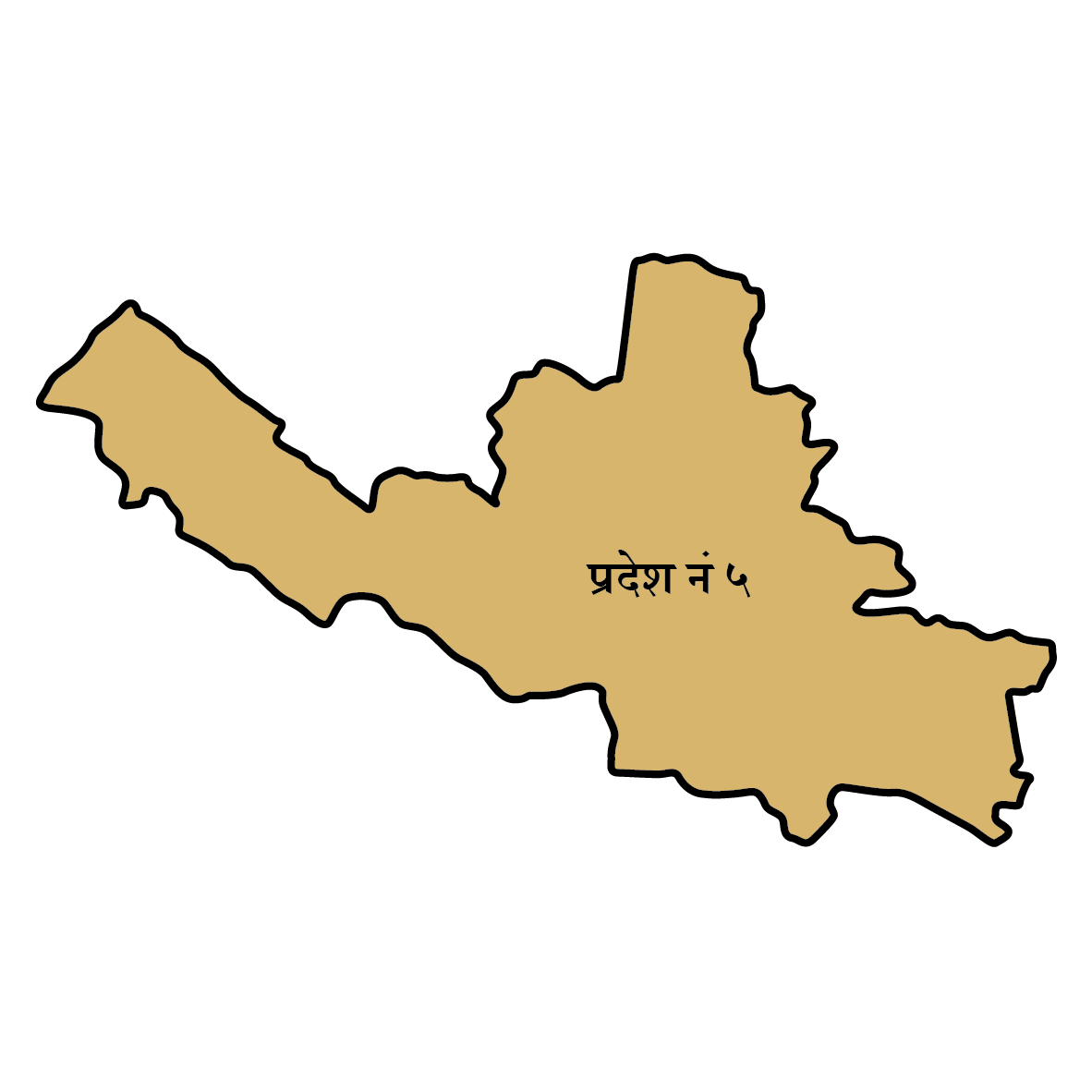 लुम्बिनी
लुम्बिनी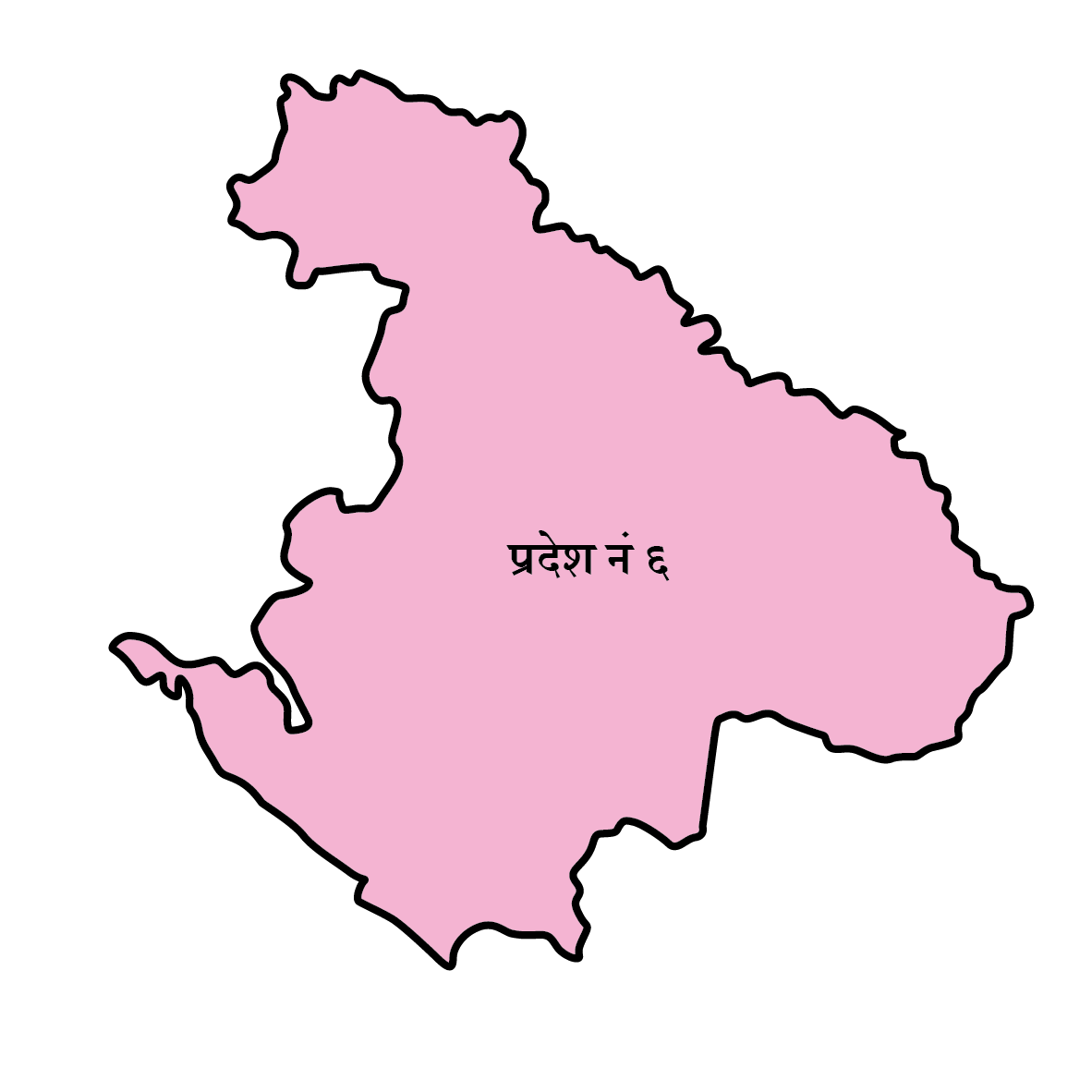 कर्णाली
कर्णाली 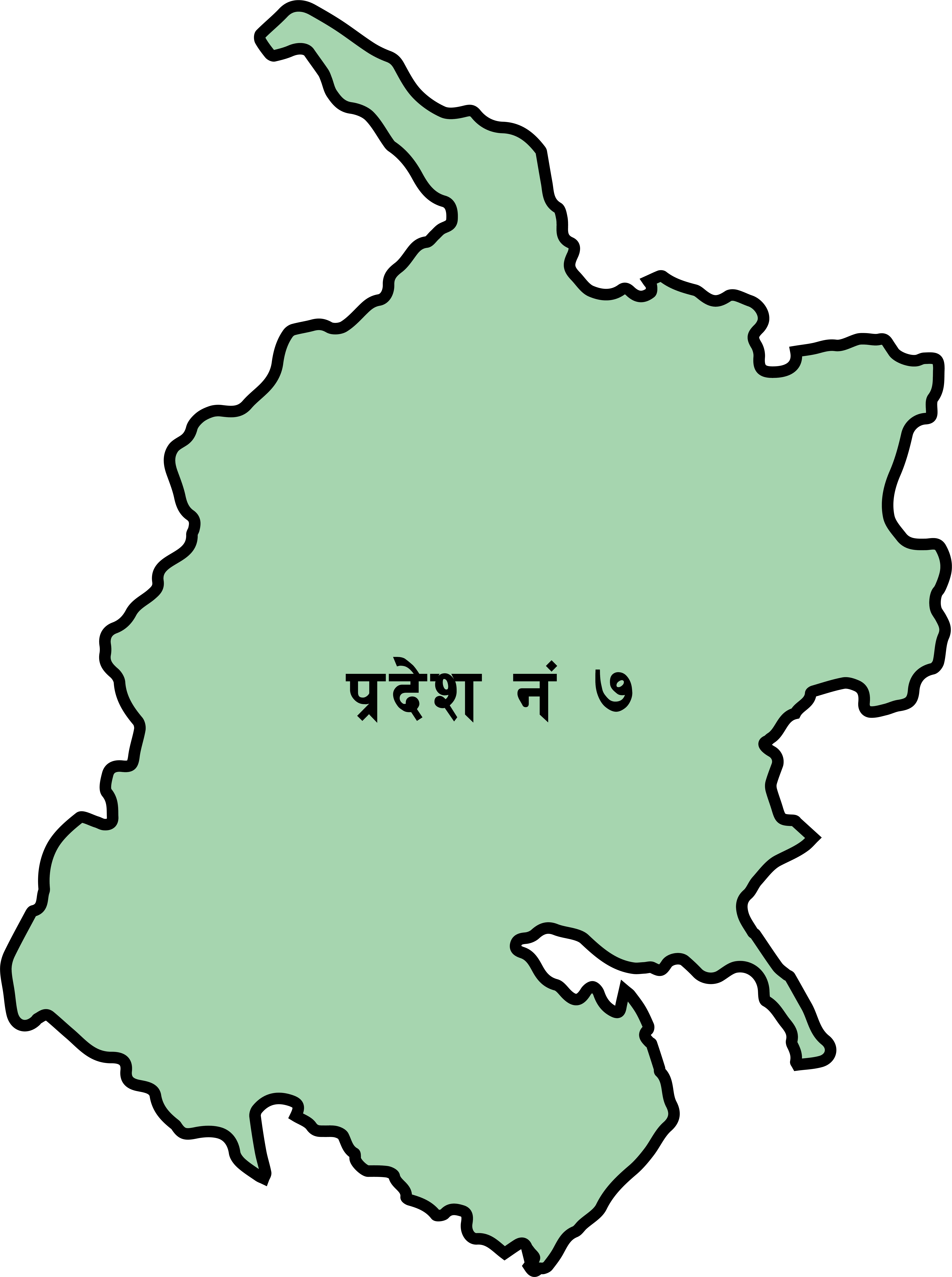 सुदूरपश्चिम
सुदूरपश्चिम
















